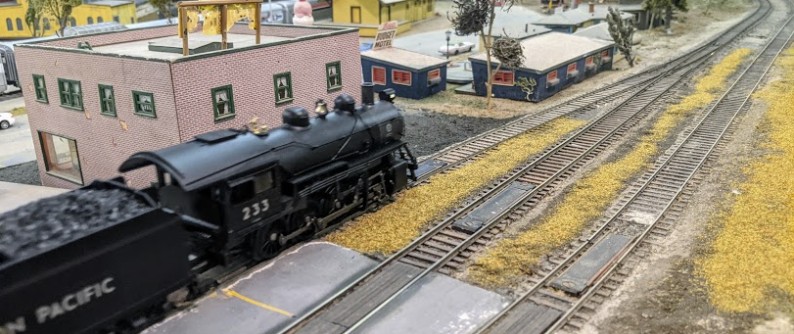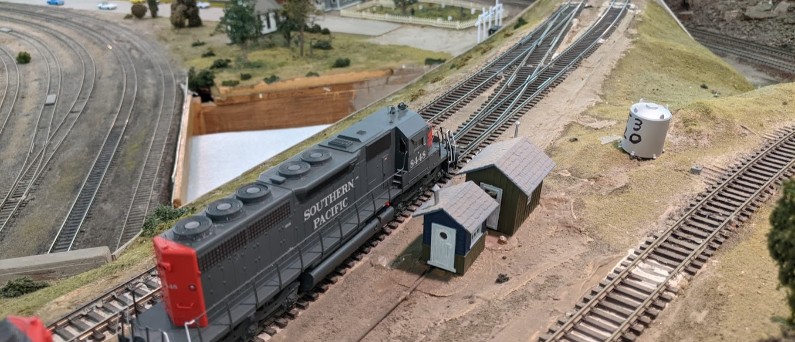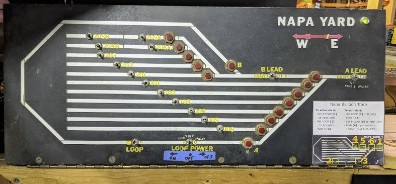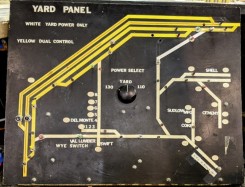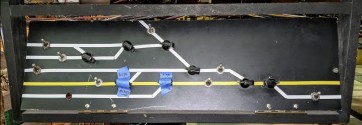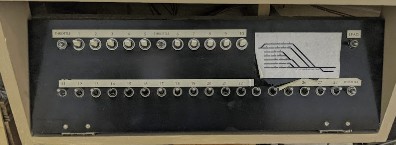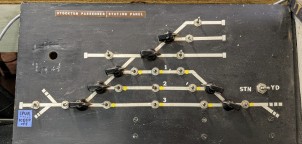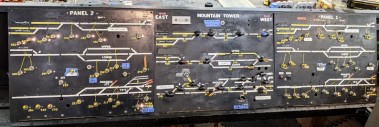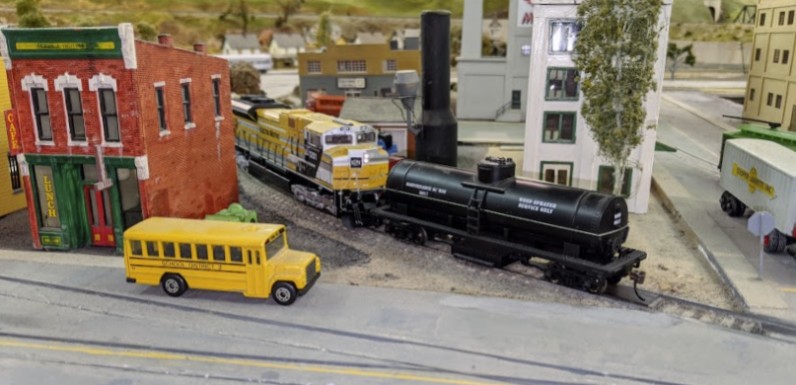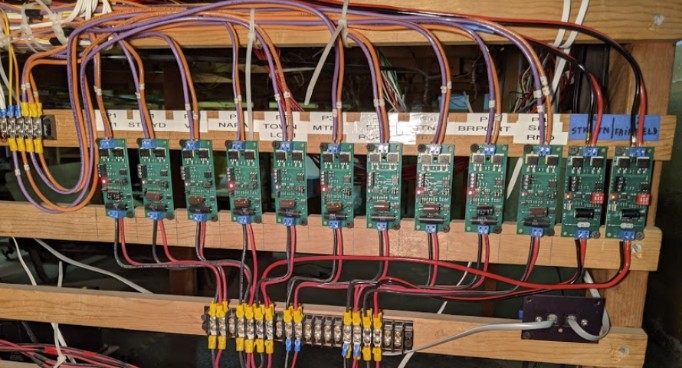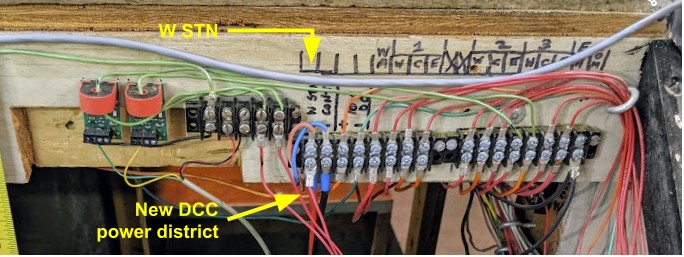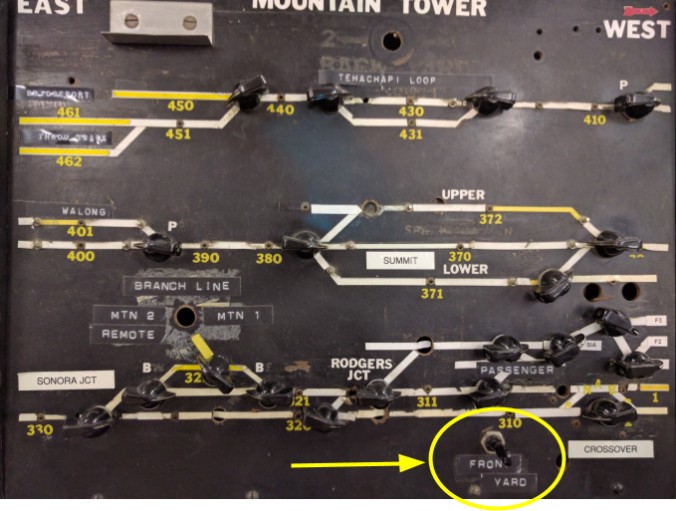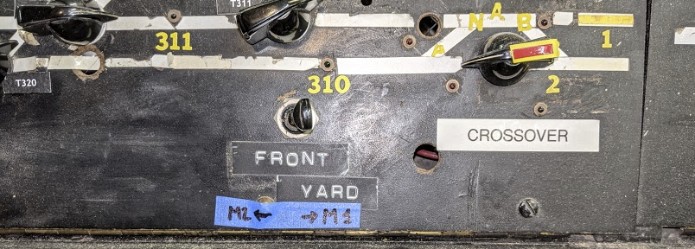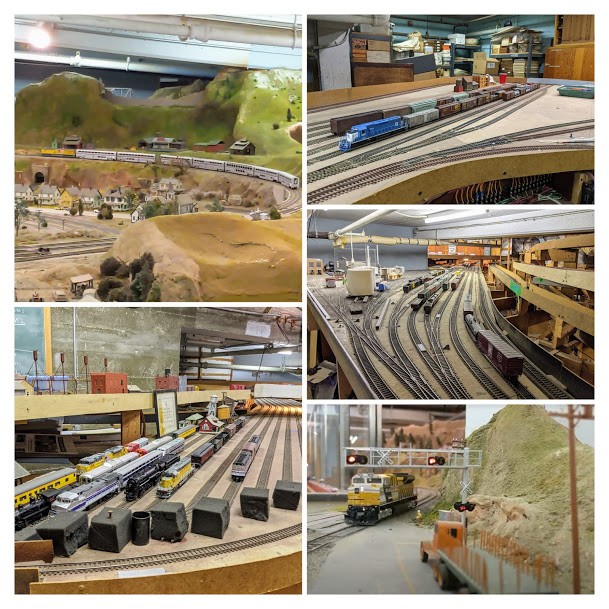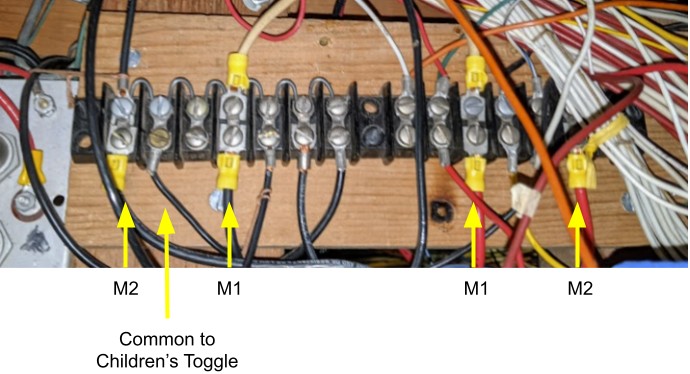The Randall Museum in San Francisco hosts a large HO-scale model railroad. Created by the Golden Gate Model Railroad Club starting in 1961, the layout was donated to the Museum in 2015. Since then I have started automatizing trains running on the layout. I am also the model railroad maintainer. This blog describes various updates on the Randall Museum Model Railroad and I maintain a separate tech blog for all my electronics & software not directly related to Randall.
Today we are working on the siding B91, located between turnouts T80 and T90. It has been unused for quite a while. Turnouts T80 and T90 still work fine. After carefully scrubbing the track on the siding to clean it, it worked fairly well.
A steam train enters the siding at T90.
On the other side at T80, we have 3 electromagnet uncouplers:
Click here to continue reading...
Affected |
Mainline block B320 (outside) from Stockton Station to Sonora. |
Description |
Dead spot after the cantilever signal bridge. |
Summary Fix |
Broken solder on outside rail. |
Description of Issue
Today we’re fixing a dead spot that appeared out of the blue on the mainline, in the middle of block B320, right were engine 1201 is on this picture:
Initial inspection shows there’s nothing interesting there. It’s the middle of the block. Closer inspection gives a different story; one may even say this spot had a story to tell:
Click here to continue reading...
Affected |
Turnout T320 (crossover from B321 to B320). |
Description |
The inner point does indeed not close properly against the stock rail. |
Summary Fix |
Close point properly and spike. Needs more work. |
Description of Issue
T320 is a crossover that brings trains from block B321 to B320 in our normal running direction.
We’ve been experiencing some engines shorting on turnout T320 “again”. And interestingly, some engines would go past that turnout with no problem, and some would stop and short on the turnout.
A pair of SP SD40s arrive at T320.
It’s worth noting that this turnout is currently spiked. The tortoise is currently missing the spring wire, and there’s a short in the toggle button at the panel; because it offers little valuable operational benefit to us, I had thus disconnected it and spiked it for now.
Once I learned Jim was having issues there, my first reaction was to try different trains to replicate the problem and identify some kind of pattern. Our track cleaning engine EMDX 1201 has no trouble going over it, nor do the automated trains. Maybe it’s a load issue… I tried to replicate the issue using two UP SD70s there with a long train, and could not replicate the problem. However once, just once, I got the 1201 engine to do a short stop-and-go hesitation there. Yet, very interestingly, the issue has been consistently reproducible with these SP SD40s, and I finally got to be on the spot to see the problem in action. I was eager to be able to reproduce it… not only is this turnout really hard to reach making it nearly impossible to get the train out of it, it is also a very important part of the automation so I need trains to run flawlessly over it.
After trying some variations, I found these SP units work fine alone, yet they short when “under load”. And when shorted, here’s an interesting detail:
Click here to continue reading...
I started a project list one year ago and it’s time to look at what has been accomplished, and what’s left to do. Note that this is basically a snapshot of the same task list which is available in the layout presentation document here.
Task |
Impact |
Work Load |
|
Stockton Station dedicated Circuit Breaker [done] |
Need |
Medium |
Low |
DCC Mainline turnouts for Napa yard approach [done] |
Need |
High |
Medium |
DCC Mainline turnout for Bridgeport yard [done] |
Need |
High |
Low |
Grade crossing lights at Fairfield Station [done] |
Need |
High |
Medium |
Napa yard clean & usable by operators [done] |
Need |
High |
Very High |
Bridgeport yard clean & usable by operators [done] |
Need |
High |
Very High |
Fixing dead spot at Sultan |
Need |
Medium |
Medium |
Fix the Fairfield-Lodi approach Status: Replacing turnout motor for T905 |
Need |
Medium |
Medium |
Layout “cab ride” Cameras & Display for Public |
Want |
High |
High |
Computer monitoring of all Circuit Breakers |
Want |
Medium |
High |
Finish DCC control Mountain Turnout Panel |
Need |
Low |
High |
DCC control Stockton Passenger panel |
Need |
Low |
High |
DCC block detection on Valley panels 1 & 2 |
Need |
Low |
High |
DCC block detection on Mountain panel 1 |
Need |
Low |
High |
Automation of Fairfield area |
Want |
High |
Very High |
Automation software “Conductor” v2 Status: Experiment on-going. |
Want |
High |
Very High |
Notation: The “need” vs “want” column is highly subjective based on what I believe needs to be done here. “Impact” is from the perspective of the Saturday Operators and/or the Automation from a public point of view, e.g. would visitors/operators notice this work has been done. Low impact does not mean the task is not important -- it’s the “behind the scene” stuff that enables more to be done later. Ironically low impact often equates to a higher amount of work. |
|||
There are two new tasks added in this list. It’s satisfying to be able to mark six tasks as being fully done, and some serious progress has been done on six other tasks.
For contrast, back in 2019, I managed to accomplish zero tasks, as the whole year was all about maintenance to keep the automation and the operators running. Of course 2020 was different since there was no such running.
A very important difference is that I was able to allocate almost two solid weeks at the end of December to work on projects -- which I had been unable to do the year before since the museum was open and automation had to be running at all times.
Today’s visit on the layout was mostly fixing some little overdue things.
To get started, I dusted all the yard panels. This has to be done very carefully to not damage the delicate inscriptions -- some of these decals are quite old and unglue very easily.
|
|
|
|
|
|
|
|
I rearranged the lights on the side of the mountain to remove dark spots; it is now somewhat properly illuminated:
Click here to continue reading...
Back in 2015 I spent quite some time “reviving” the Fairfield Industrial Yard [*], cleaning the tracks, identifying which turnouts still worked or not. And yesterday we had our cleaning engine 1201 attempting to clean the Fairfield tracks again!
So far I cleaned a few feet on two tracks only. Progress is slow as this has not been cleaned for a while and there’s a lot of track in “pavement” that is hard to clean -- neither the rollers nor the pad car can get to it easily. So it will take a while, and that’s fine.
The goal is to have some simple automation on this -- basic shuttle back-and-forth running. No turnout automation at first.
[*] Speaking of names, which one is proper? Fairfield Industrial Yard or Fairfield Industrial Park?
Click here to continue reading...
The NCE EB1 circuit breakers for Fairfield and Stockton Station are now installed:
DCC is now provided to the Stockton Station using a dedicated power district on the “West” terminal:
Click here to continue reading...
The Mountain Turnout Panel has this little mysterious “Front Yard” toggle at the bottom, and for a long while I could not understand what it was connected to nor what is purpose was:
Now I understand that flipping it right or left connect its output to the Mountain 1 or Mountain 2 panels power:
Click here to continue reading...
2021-01-01 - Happy New Year
Category RandallHappy New Year 2021 from the Randall Museum Model Railroad team.
The museum has been closed to the public for a good portion of 2020. However we kept doing maintenance on the model railroad. After nearly four years off service, the Napa and Bridgeport yards are back at being fully operational for Saturday operators to take advantage of. The lights & bell are back on the Fairfield grade crossing. Other maintenance and improvement has happened which is not directly visible to the public yet will help long term.
Looking forward to a reopening of the museum to the public in 2021!
Update: Finally traced the one white + two red wires that were the output of the obsolete “Normal / Children’s” plug for the DC Junior Engineering Day, and which I removed. I found this:
This exposed crappy-looking connection is key to all DCC power for the Mountain 1 panel. Seriously.
The white wire converts to a black wire that then connects to the main terminal under the Mountain panel:
Once again here we can see all “common grounds” are connected together at the terminal. This also bridges the “common” from both boosters used for Mountain 1 vs 2 directly.
Click here to continue reading...

